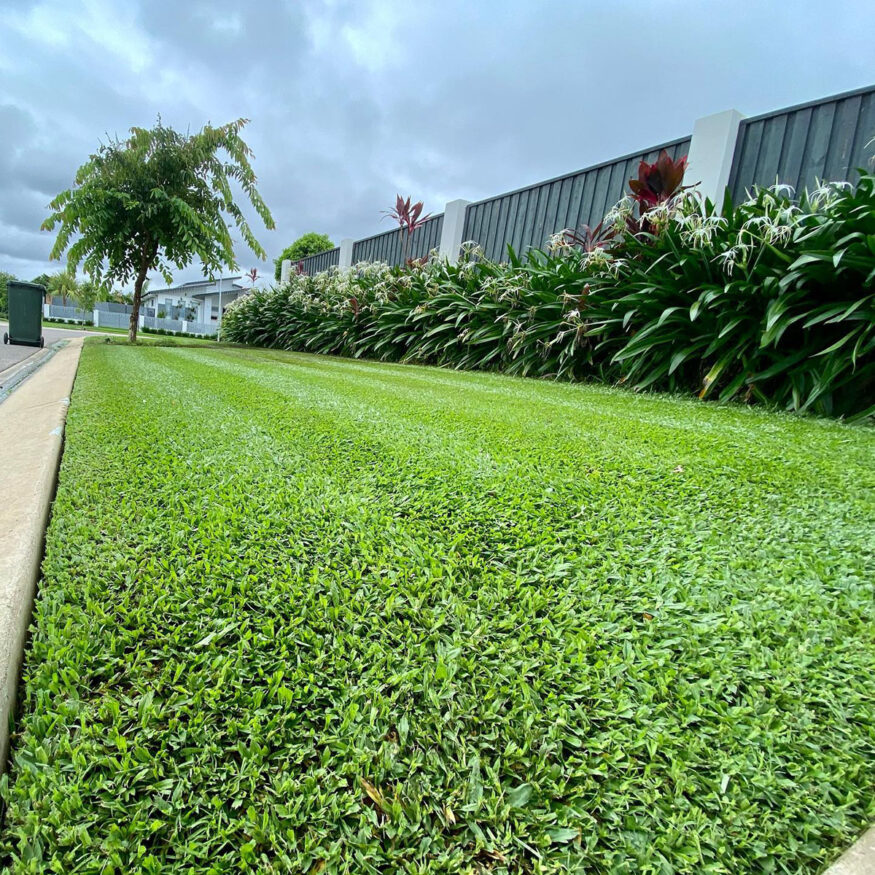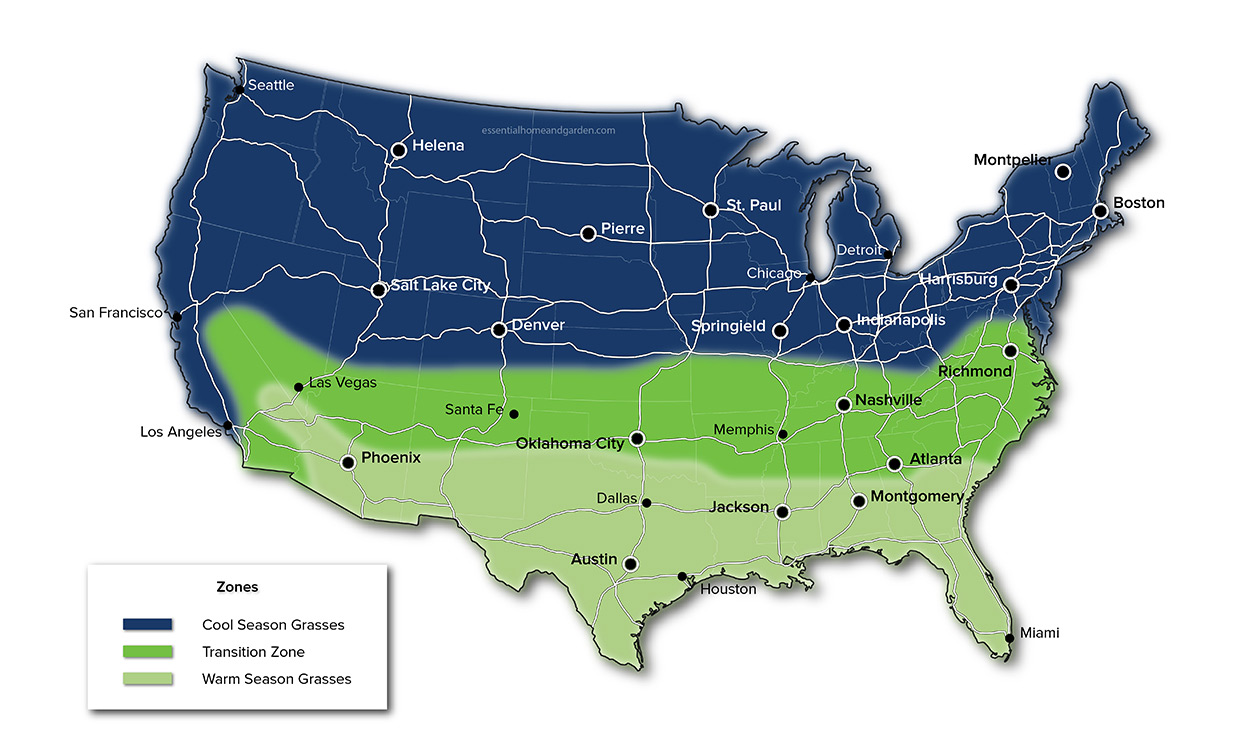Best Grass Seed For Indiana Lawns
Transform your Indiana yard with the best grass seed for Indiana’s climate. We discuss Kentucky Bluegrass, Fine Fescue, Tall Fescue, and Perennial Ryegrass. Dive in now.
Choosing the right grass seed type for your lawn can seem like a daunting task, but with a little knowledge and guidance, you'll soon discover the perfect fit for your needs. The key to a lush and thriving lawn lies in selecting a type of grass that not only complements your region's climate but also matches your specific growing conditions, such as sunlight exposure, water availability, and soil type.
As you begin researching which grass seed type you should choose, it's important to first identify whether your region is best suited for warm-season or cool-season grasses.
Warm-season grasses are heat-tolerant but become dormant as temperatures drop, while cool-season grasses, like Kentucky Bluegrass and Perennial Ryegrass, flourish during milder temperatures. It's also important to consider factors such as foot traffic and maintenance requirements when making your decision.
By understanding the characteristics and growth patterns of various grass seed types, you can create a lawn that is not only beautiful but also sustainable and low-maintenance.
In this article, first, we will take a look at the most important factors to consider when choosing a grass type. Then, at the bottom of this article, you will find a state-specific grass-type guide. In these articles you'll find in-depth information on the best grass seed types for your particular location, ensuring you make an informed decision and enjoy a healthy, vibrant lawn for years to come.

Climate plays a significant role in grass seed selection. Factors such as temperature, shade, water availability, and seasonal changes all impact the success of a particular grass type in your lawn.
Both temperature extremes and seasonal fluctuations affect the growth and sustainability of grass types. Cool-season grasses, such as Kentucky bluegrass, fine fescue, perennial ryegrass, and tall fescue, thrive in cooler regions where winters are cold and summers are mild.
In contrast, warm-season grasses like bermudagrass, zoysia, centipedegrass, and bahia grass do well in warmer areas with hot summers and mild winters. Bermudagrass, for example, is more suited to southern states with hot summers and minimal frost.
Grass types also differ in their shade tolerance and water needs. Some grasses, such as fine fescue, can tolerate moderately shady areas, while others like bermudagrass require a higher amount of sunlight to thrive.
Water availability and drought resistance are equally crucial factors. Warm-season grasses, such as zoysia and bermudagrass, often have better drought resistance compared to cool-season grasses. If you live in an area prone to drought or have water restrictions, choosing a grass type with higher drought resistance might be advantageous.
As you begin to learn about the grass types suitable for your region, consider these climate factors to make an informed decision. Matching the right grass seed to your specific climate will help ensure a successful, healthy lawn.
All lawns are not created equal. From areas with scorching summers to locales with frigid winters, your region's climate can critically influence your lawn's health and sustainability. So, it's no wonder that what works best in one region may not thrive in another. That's why understanding the United States Department of Agriculture (USDA) growing zones is vital when deciding which type of grass seed to plant. These zones range from 1-13, with Zone 1 being the coldest and 13 the warmest.
You can view the full USDA Plant Hardiness zone map here.
But often, this map can be simplified down into the following form that shows the cool season grass zone, the transitional zone and the warm season grass zone.

Having evolved to flourish in regions with mild summers, cool-season grass varieties including fescues and bluegrass prove their worth during spring and fall, maintaining a lush and classy green when temperatures are 60-75 degrees Fahrenheit. These trusty varieties are favorites in the northern zones.
You can see our full list of cool-season grasses here, but the most popular types are:
Sitting on the fence between the cool north and warm south, transitional grasses can handle a bit of both worlds. They offer the perfect compromise for those living in middle-ground zones.
Grasses that are suited for the transitional zone may be cool season or warm season grasses.
A common transitional grass type is Zoysia grass.
If your region flaunts hot summers, warm-season grasses like Bermudagrass and Centipede grass will thrive. These sun lovers stay green during the warm months and go dormant yet relatively unscathed during the colder months.
See our full list of warm-season grasses here. Some of the most popular types include:
When it comes to choosing the right grass seed for your lawn, it's essential to consider its intended use and the characteristics you require.
For instance, some grasses thrive in full sun, while others can tolerate partial shade. If your lawn gets constant sun exposure throughout the day, warm-season grasses like Bermuda and Zoysia would be an excellent choice. On the other hand, cool-season grasses such as bluegrass, fine fescue, and perennial ryegrass can grow well in lawns with a mix of sun and shade. Keep in mind that each grass type has different sunlight requirements, so don't forget to consider the sun's intensity in your area.
In addition to sunlight requirements, another crucial aspect to think about is the level of foot traffic your lawn will experience. If you have kids or pets, or you often host outdoor gatherings, you'll want a grass type that can withstand the wear and tear. Grasses like tall fescue, Kentucky bluegrass, and perennial ryegrass are known for their resilience and ability to handle heavy foot traffic. These grasses can bounce back quickly, keeping your lawn looking lush and healthy.
Aside from sunlight and foot traffic, it's essential to know the specific growing conditions in your region and the watering requirements of the grass type you choose. Cool-season grasses typically perform better in regions with colder temperatures, whereas warm-season grasses excel in hotter climates. For instance, zoysia grass tends to go dormant in cooler weather, turning yellow. Pay attention to the typical moisture levels and water availability in your area and select a grass type that matches those conditions.
Also, consider the lawn maintenance involved with each grass type. If you are after a low-maintenance lawn, then choosing Tall Fescue for cool season areas or St. Augustine for warm season areas may be worth considering.
Transform your Indiana yard with the best grass seed for Indiana’s climate. We discuss Kentucky Bluegrass, Fine Fescue, Tall Fescue, and Perennial Ryegrass. Dive in now.
Selecting the best grass seed for North Dakota lawns? Consider Kentucky Bluegrass, Fine Fescue, Perennial Ryegrass, and Buffalograss. Explore their benefits and maintenance requirements to create a beautiful and durable lawn that can withstand North Dakota’s unique climate and soil conditions.
Achieve a picture-perfect Delaware lawn with the best grass selection. Explore Tall Fescue, the resilient solution for challenging climates.
Overcome South Dakota’s weather challenges and maintain a beautiful lawn with our recommended grass seed selection
Choosing the right grass seed for Mississippi is essential. Learn about top options like Bermuda, centipede, and fescue for your dream lawn.
Transform your Wyoming yard with the best grass seed options. Explore top varieties like Kentucky bluegrass and find the perfect fit for your lawn!